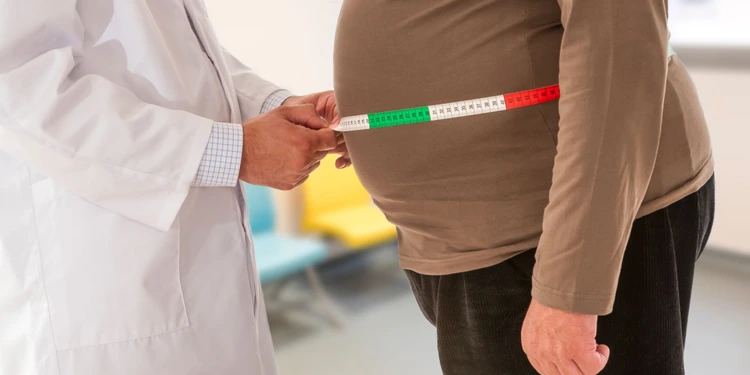As we age, our bodies naturally begin to store more fat. For adults between the ages of 30 and 65, this can become a significant concern as the accumulation of body fat has been linked to an increased risk of a number of health issues, including heart disease, diabetes, and certain types of cancer.
There’s Body Fat
There are two main types of body fat: subcutaneous and visceral.
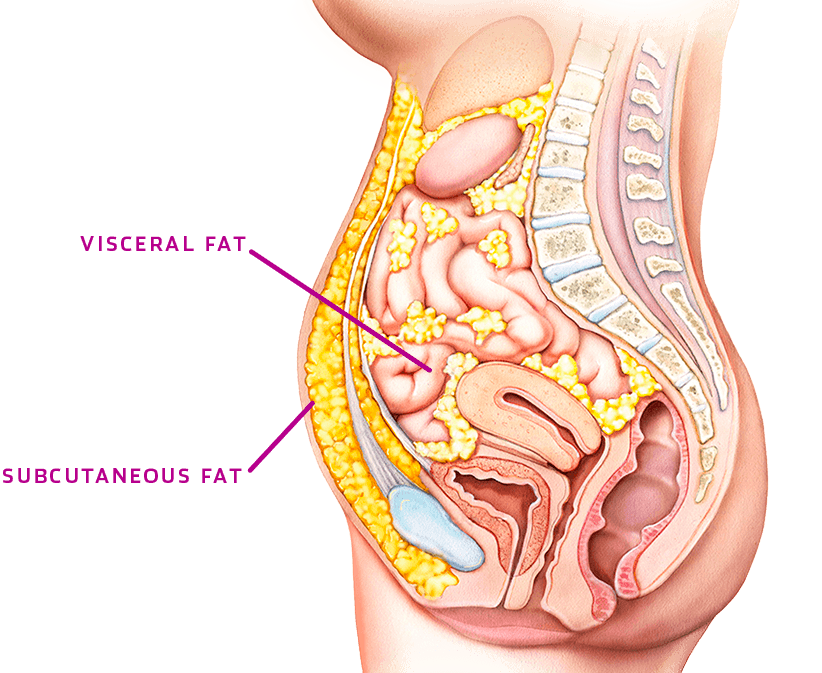
Subcutaneous fat is the fat that lies just below the skin and can be pinched between the fingers. This type of fat is relatively harmless and is actually a necessary component of our bodies, providing insulation and cushioning for internal organs.
Visceral fat, on the other hand, is the fat that surrounds the internal organs, such as the liver and pancreas. This type of fat can be dangerous as it has been linked to an increased risk of heart disease, diabetes, and certain types of cancer.
In terms of total body weight, body fat is measured as a percentage of total body weight (Not to be confused with BMI). A healthy range for adults is generally considered to be between 20-25% for men and 25-30% for women. However, it’s important to note that where the fat is stored on the body also plays a role in determining overall health risks.
Men tend to store fat primarily in the abdominal area, which is often referred to as “beer belly” or “apple-shaped.” This type of fat storage has been linked to an increased risk of heart disease and diabetes.
Women, on the other hand, tend to store fat primarily in the hips and thighs, which is referred to as “pear-shaped.”
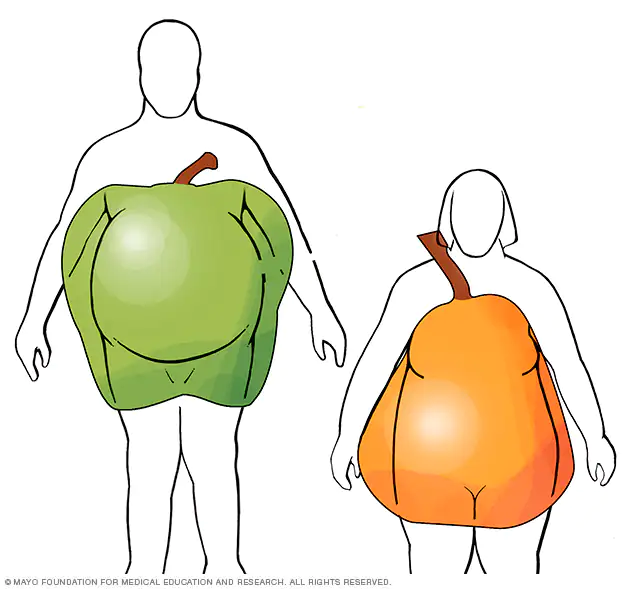
In terms of why body fat accumulates, there are a number of factors at play. Genetics, diet, and physical activity levels all play a role in determining how much body fat a person has. Additionally, as we age, our metabolism tends to slow down, making it more difficult for our bodies to burn off excess fat.
Then there’s water.
The relationship between fat and water in the body is complex and interrelated.
Adipose tissue, or body fat, is primarily composed of triglycerides, which are molecules made up of three fatty acids and one glycerol molecule. These triglycerides are stored in adipocytes, which are specialized cells that make up adipose tissue. Adipocytes are known to store large amounts of lipids and water, with the ratio of water to lipids varying depending on the individual’s hydration status and body composition.
When a person is dehydrated, the water content in the adipocytes decreases, and the ratio of lipids to water increases, which can lead to a higher body weight due to the decreased water content. Additionally, when a person loses weight, the water content in the adipocytes increases, and the ratio of lipids to water decreases, this can help to explain the fluctuation in weight that can be seen during weight loss, as the body releases water along with the fat. The balance between fat and water in the body is important for overall health, as an imbalance can lead to issues such as edema, or fluid retention, and dehydration, which can lead to health problems such as kidney damage and electrolyte imbalances.
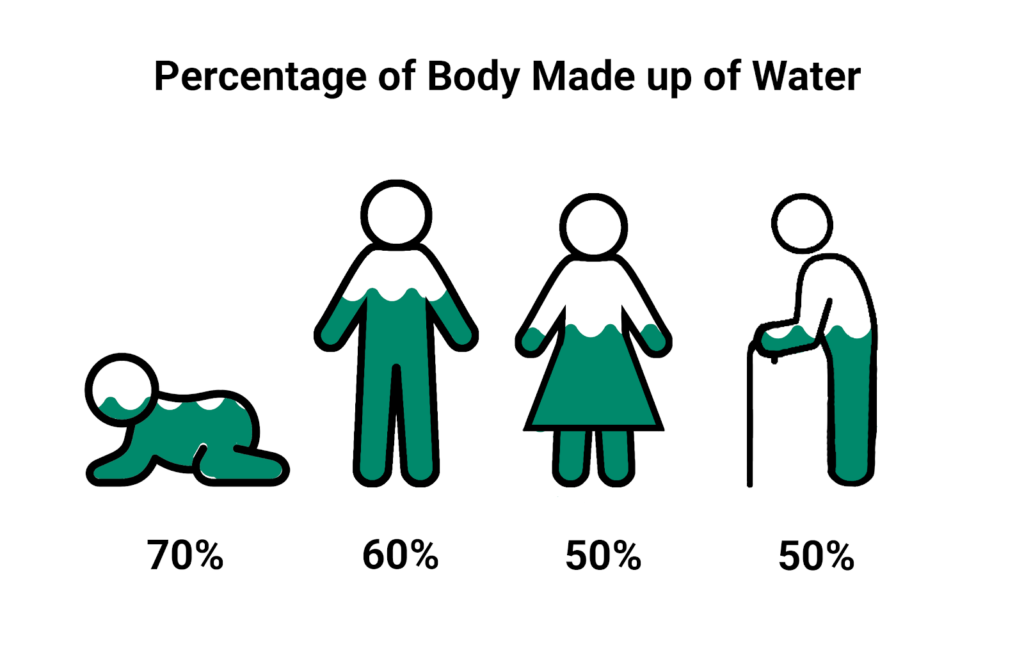
So, how do you go about measuring your body composition?
There two best methods that can be used to measure body composition and body fat, each with their own advantages and limitations:
- Bioelectrical impedance analysis (BIA): This method uses a small electrical current to measure the resistance of fat-free mass, such as muscle and bone, and fat mass. This method is non-invasive and relatively inexpensive, but it can be affected by hydration levels and may not be as accurate as some of the other methods.
- Skinfold calipers: This method involves measuring the thickness of a fold of skin and the underlying fat using calipers. The measurements are taken at several specific locations on the body and are then used to estimate body fat percentage. This method is relatively inexpensive and easy to use, but it can be affected by the skill of the person taking the measurements and may not be as accurate as some of the other methods.
There are more methods such as DXA (Dual-energy x-ray absorptiometry), Hydrostatic weighing, NIR (Near-infrared interactance) but these tend to be i) more expensive and ii) less available to us normal everyday folk.
Overall, it’s important for adults between the ages of 30 and 65 to be mindful of their body fat levels and to make healthy lifestyle choices in order to maintain a healthy weight and reduce the risk of health issues associated with excessive body fat.
This includes eating a balanced diet, engaging in regular physical activity, and limiting the consumption of alcohol and processed foods.
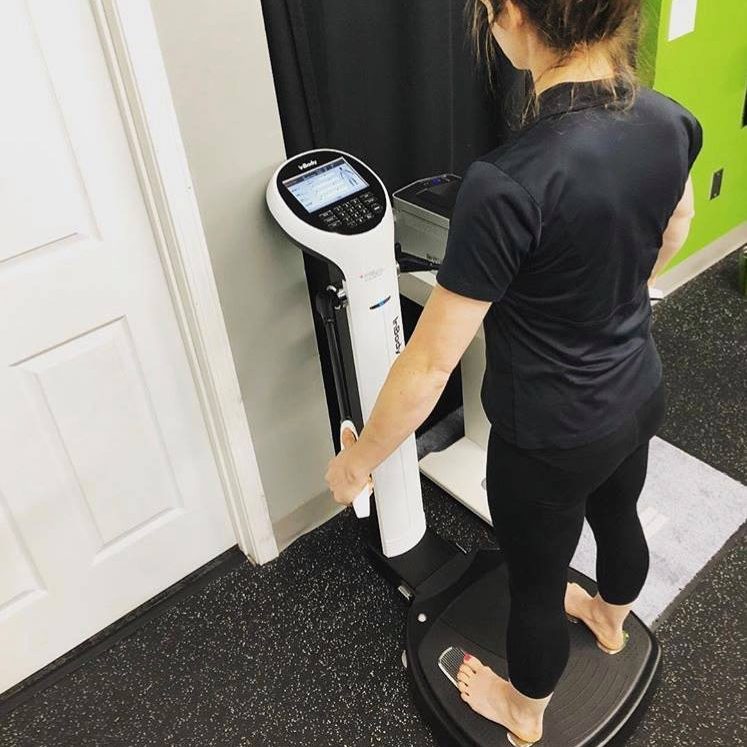
Body Composition Measurement
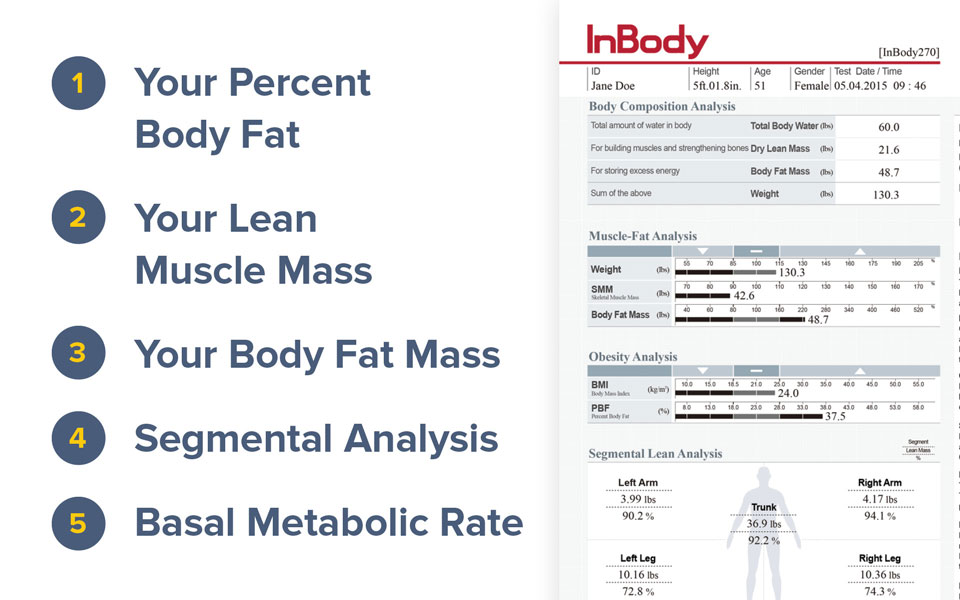
It takes 45 seconds to understand all the detail about your muscle, fat, and water values including lean mass and fat values in each segment of your body.
Knowing your numbers can give you a better idea of where to focus your efforts.
Also,

If you would like to get your own full-blown copy of our “Super Foods” eBook jampacked with information and suggestions…..

